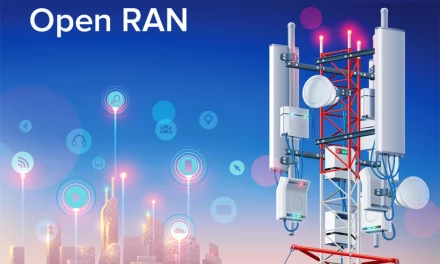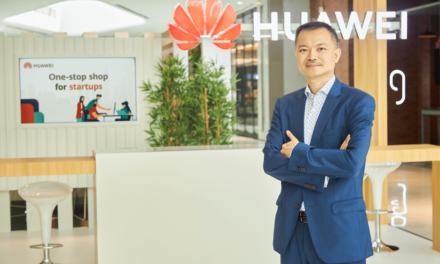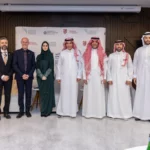
Huawei highlights the significance of technology in the future at Mobile World Congress Shanghai 2021

Chen Lifang: Technological advancements are hyped and politicized, sometimes demonized. Many have stopped believing in the power of technology because of fear and distrust. Some are going to great lengths to hinder the development of technology.
Ken Hu: We have to focus innovation on bridging the gap between the haves and have-nots, and on driving digital inclusion
Middle East, February 28, 2021: At the recently concluded Mobile World Congress Shanghai 2021, Huawei’s Chen Lifang, Huawei Senior Vice President and Board Member, delivered a keynote speech during the Connected for Shared Prosperity Forum titled “Believe in the Power of Technology” where she described how technology can be used as an engine for human progress. In her speech she said: “We’ve all had mixed feelings about 2020. The pandemic has changed our lives. Many things we took for granted no longer exist and our values have changed. My biggest takeaway from the past year has been just how hard it is for society to reach a consensus. There seems to be constant conflict and disagreement, from deciding if it’s necessary to impose lockdowns to debating if it’s worth it to wear a mask. Technological advancements are hyped and politicized, sometimes demonized. Many have stopped believing in the power of technology because of fear and distrust. Some are going to great lengths to hinder the development of technology.”
Also, Huawei’s Deputy Chairman Ken Hu spoke about the huge impact that COVID-19 has had on countries, enterprises, and people around the world, as well as the role technology plays in combatting the pandemic. “Innovation isn’t just about solving the challenges we face today,” said Hu. “It’s about lighting up tomorrow. Once we get the pandemic under control, we need to think hard about how we can innovate to improve quality of life, make businesses smarter, and create a more inclusive world. “We have to focus innovation on bridging the gap between the haves and have-nots, and on driving digital inclusion”.
Huawei’s Executive Director and Carrier Business Group President Ryan Ding gave a keynote speech at the company’s “5G Brings New Value” forum, where he announced the official launch of Huawei’s 5GtoB solution. This new solution is aimed at creating new value for every player across the industry value chain. Ding stated that building on its experience in connectivity, computing, and industry digitalization, Huawei has worked with operators and other industry partners to develop a one-stop solution that covers sales, operations, and services – the 5GtoB solution. This solution will simplify transactions for enterprise users, help operators monetize their network capabilities, and allow partners to innovate more efficiently, creating new value for every player involved.
During the event, Huawei also launched the OptiX SuperSite solution for global operators. Richard Jin, President of Huawei’s Transmission & Access Product Line, said, “OptiX SuperSite is how industry and home users get connected at a high-speed level. It also presents an opportunity for operators to benefit from the enterprise market and enhance home broadband experience.”
At MWC as well, Mr. Gan Bin, Vice President of Huawei Wireless Product Line, delivered a keynote speech titled “1+N, Innovating for a Mutually Beneficial Future” and unveiled a full series of products and solutions for building 1+N 5G target networks. These products and solutions will provide global carriers with leading 5G network capabilities, enabling them to create greater value. Mr. Gan said that these products and solutions are further innovated and upgraded based on scenarios to help carriers continuously develop differentiated network advantages on 1+N target networks and implement 5G ultimate capabilities.
Separately, Xinyan Coal Mine, Shanxi Mobile, and Huawei jointly released a 5GtoB kite-like solution for public network integrated non-public networks (PNI-NPN). The solution provides high-performance, high reliability 5G networks that function through a combination of private and public networks. It also aims to accelerate the development of the 5G industry and increase the value of 5G for businesses, ultimately creating momentum in the digital economy.
At the 5G Advanced Summit hosted by the Global System for Mobile Communications Association (GSMA) during MWC Shanghai 2021, Huawei explored how 5G must expand its boundary of capabilities to open up a new space of business. As new applications keep emerging in the market, the three use cases originally defined in 5G need enhancement to meet diverse IoT service requirements. The boundary of 5G capabilities must be expanded to open up a new space of business. Immersive interaction services are rapidly developing. 5G AR/VR has enabled superior virtual experience. With the rise of lightweight XR devices, 5G XR will also become a reality. This requires 5G to be further enhanced to deliver premium immersive experiences. 5G networks will be required to increase its average speed from 120 Mbps to 2 Gbps as high definition improves from 4K to 16K. To ensure real-time interaction in the virtual world, 5G must also further reduce transmission latency from the current 20 ms to 5 ms.
Moreover, China Mobile and Huawei jointly unveiled the 5G New Calling solution. This solution harnesses IMS data channel architecture and provides an enhanced voice experience with HD, visual, and interactive services. By using this solution, operators can refine the 5G service experience, satisfy industry customer requirements, gain advantages, and achieve business success.
Mr. Zhou Taoyuan, Vice President of Huawei and President of Digital Power Product Line, also released Digital Power Zero Carbon Network Solution at Huawei’s media communication conference, aiming to help operators to implement the zero carbon networks strategy and accelerate the green and sustainable development worldwide.
Furthermore, Huawei and industry partners have as well released the Edge Native Technical Architecture White Paper 1.0 at the Multi-access Edge Computing Summit. This white paper introduces the concept, technical architecture, and industry practices of Edge Native, aiming to promote the development of Edge Native technologies and help industries unlock the disruptive potential of edge computing. Additionally, Bill Tang, President of Huawei Global Technical Service, launched the General Digital Engine (GDE) platform. The GDE adopts the “1+4+N” architecture: “1” refers to an open cloud-native platform; “4” means four capabilities that enable data sharing, intelligent production flow, capability sharing, and Integrated low-code self-development. The platform introduces digital and intelligent technologies into carriers’ planning, construction, maintenance, optimization, and operation processes to help them transform to digital operations enabling carriers and partners to innovate “N” application scenarios.
















































